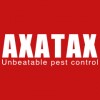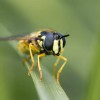Mouse Hunters Professional Pest and Vermin Control Services has years of experience in making sure that your living space is free of Vermin and pest invasion. Furthermore, you can rely on our first class services to make your Pest problems a thing of the past. Everybody should be entitled to enjoy a healthy and satisfying life in a pleasant, peaceful and pest free environment.
Unfortunately, this is not always the case. Indeed for some people, life could not be more different. If you are one of these people Mouse Hunters can help. Treatments are always best carried out by professional pest controllers. At Mouse Hunters we are fully qualified by The Royal Society of Public Health and fully certified by City & Guilds. Mouse Hunters Ltd is also comprehensively covered by public liability insurance.
We can provide Pest Control cover over a wide area from Milton Keynes, Woburn, Harold, Bedford, Biggleswade, Ampthill, Flitwick, Toddington, Luton, Hitchin, Henlow, Letchworth, Baldock, Stevenage, Hatfield, Welwyn, Elstree or Northwood.
Unfortunately, this is not always the case. Indeed for some people, life could not be more different. If you are one of these people Mouse Hunters can help. Treatments are always best carried out by professional pest controllers. At Mouse Hunters we are fully qualified by The Royal Society of Public Health and fully certified by City & Guilds. Mouse Hunters Ltd is also comprehensively covered by public liability insurance.
We can provide Pest Control cover over a wide area from Milton Keynes, Woburn, Harold, Bedford, Biggleswade, Ampthill, Flitwick, Toddington, Luton, Hitchin, Henlow, Letchworth, Baldock, Stevenage, Hatfield, Welwyn, Elstree or Northwood.
Services
These ants are pale straw yellow with a darker head and abdomen.
They can be up to 2mm in length and have 'elbowed' antennae on a relatively large head.
They also have noticeable black eyes.
Habitat: These are tropical species and should only be found in heated buildings in the UK.
Main diet: They are omnivorous and feed on a wide variety of foods, but need direct access to water.
Nesting habits: They are active at all times of day and form nests in cavities and heating ducts.
There are many queens per nest with workers forming trails between the nest and food sources.
They can be up to 2mm in length and have 'elbowed' antennae on a relatively large head.
They also have noticeable black eyes.
Habitat: These are tropical species and should only be found in heated buildings in the UK.
Main diet: They are omnivorous and feed on a wide variety of foods, but need direct access to water.
Nesting habits: They are active at all times of day and form nests in cavities and heating ducts.
There are many queens per nest with workers forming trails between the nest and food sources.
A small bug of about 6mm in length.
The Bed bug is oval and flat in shape.
He is reddish brown in colour, changing to a mahogany colour if recently fed.
Habitat: The Bed bug will hide all day in crevices in beds, furniture and wallpapers; anywhere you could slide a piece of paper, the bed bug can hide.
Nesting Habits: The eggs are glued into harbourages at a rate of 4 to five a day.
The female can lay up to 200 eggs.
Breeding Cycle: After the eggs hatch the larvae will moult 5 times, taking from as little as a few weeks to several months to reach adulthood.
The Bed bug is oval and flat in shape.
He is reddish brown in colour, changing to a mahogany colour if recently fed.
Habitat: The Bed bug will hide all day in crevices in beds, furniture and wallpapers; anywhere you could slide a piece of paper, the bed bug can hide.
Nesting Habits: The eggs are glued into harbourages at a rate of 4 to five a day.
The female can lay up to 200 eggs.
Breeding Cycle: After the eggs hatch the larvae will moult 5 times, taking from as little as a few weeks to several months to reach adulthood.
Small flying bugs of about 12-15mm in length.
The Bee is dark brown/pale orange in colour getting darker in colour as it ages.
The Bee differs from the wasp in the fact that that he is hairy to look at.
The Bee has two pairs of transparent membranous wings.
The rear set being smaller in size.
This distinguishes him as member of the order of Hymenoptera also in this family or Order is the Wasp and Ant.
Habitat: The Bee is found living in large groups all working in their roles to provide their Queen "16-20mm" with a purpose built home or "hive" The Queen constantly produce eggs that are laid in hexagonal wax cells joined together.
The Bee is dark brown/pale orange in colour getting darker in colour as it ages.
The Bee differs from the wasp in the fact that that he is hairy to look at.
The Bee has two pairs of transparent membranous wings.
The rear set being smaller in size.
This distinguishes him as member of the order of Hymenoptera also in this family or Order is the Wasp and Ant.
Habitat: The Bee is found living in large groups all working in their roles to provide their Queen "16-20mm" with a purpose built home or "hive" The Queen constantly produce eggs that are laid in hexagonal wax cells joined together.
The Larder Beetle is 7 to 9 millimetres in length, he has short clubbed antennae and is a convex elongate-oval shape.
The Larder beetle is usually black in colour with a whitish traverse with black flecks.
The Larder beetle can fly.
Habitat: Common birds nests also found in poultry farms, animal feed mills and domestic premises.
Main Diet: Larvae and adult feed on animal protein.
Breeding Cycle: about 200 eggs are laid over a six month period on the larval food by the female.
The eggs then hatch and emerge as a larvae, looking like a small banded slightly hairy caterpillar with dark brown bands on a yellowish orange body of about 14mm in length.
The Larder beetle is usually black in colour with a whitish traverse with black flecks.
The Larder beetle can fly.
Habitat: Common birds nests also found in poultry farms, animal feed mills and domestic premises.
Main Diet: Larvae and adult feed on animal protein.
Breeding Cycle: about 200 eggs are laid over a six month period on the larval food by the female.
The eggs then hatch and emerge as a larvae, looking like a small banded slightly hairy caterpillar with dark brown bands on a yellowish orange body of about 14mm in length.
10-20mm winged, yellowish grey, long back legs for jumping or walking as well as for rubbing together to attract a female.
This Chirrup can drive you nuts if you like your peace and quiet.
Habitat: In the UK this insect can be found in Kitchens, Hospitals, Heating ducts; in short it loves warm places.
Nesting Habits: Damp debris or soft soil.
Breeding Cycle: Several hundred eggs can be laid over a few weeks in damp debris or a soft soil, resulting in a hatch after about two to three weeks.
They then develop through a nymph cycle normally seven to nine moults (growing out of old skin) until adulthood is achieved.
This Chirrup can drive you nuts if you like your peace and quiet.
Habitat: In the UK this insect can be found in Kitchens, Hospitals, Heating ducts; in short it loves warm places.
Nesting Habits: Damp debris or soft soil.
Breeding Cycle: Several hundred eggs can be laid over a few weeks in damp debris or a soft soil, resulting in a hatch after about two to three weeks.
They then develop through a nymph cycle normally seven to nine moults (growing out of old skin) until adulthood is achieved.
Reviews

Be the first to review Mouse Hunters.
Write a Review




